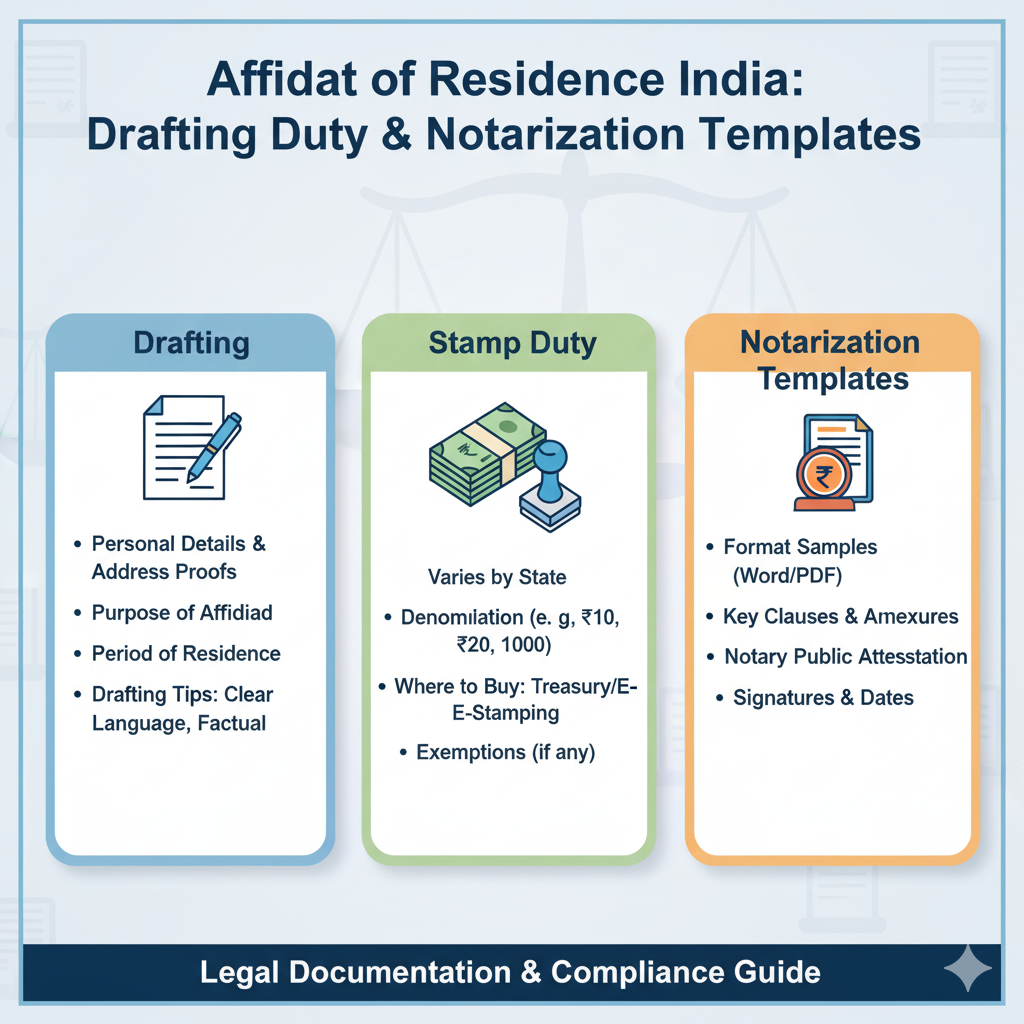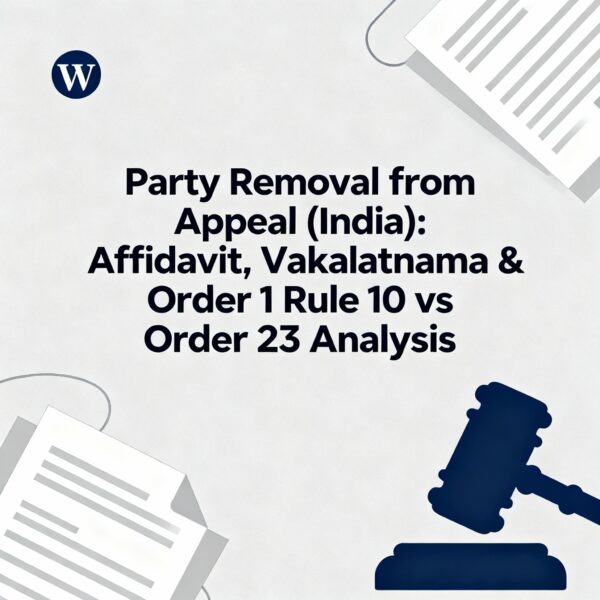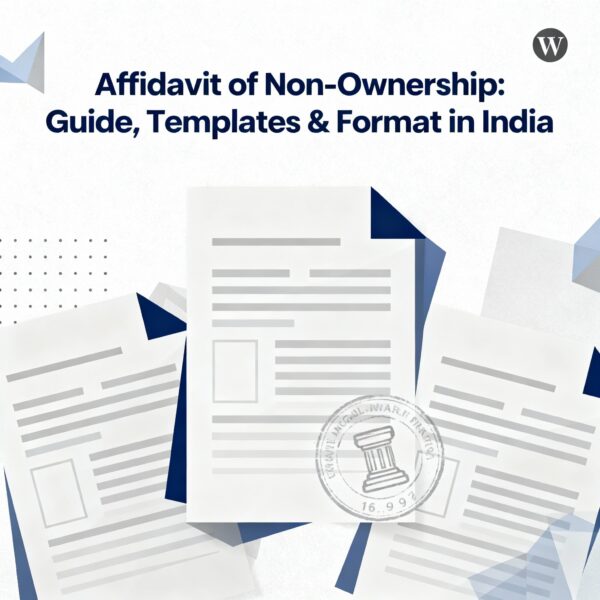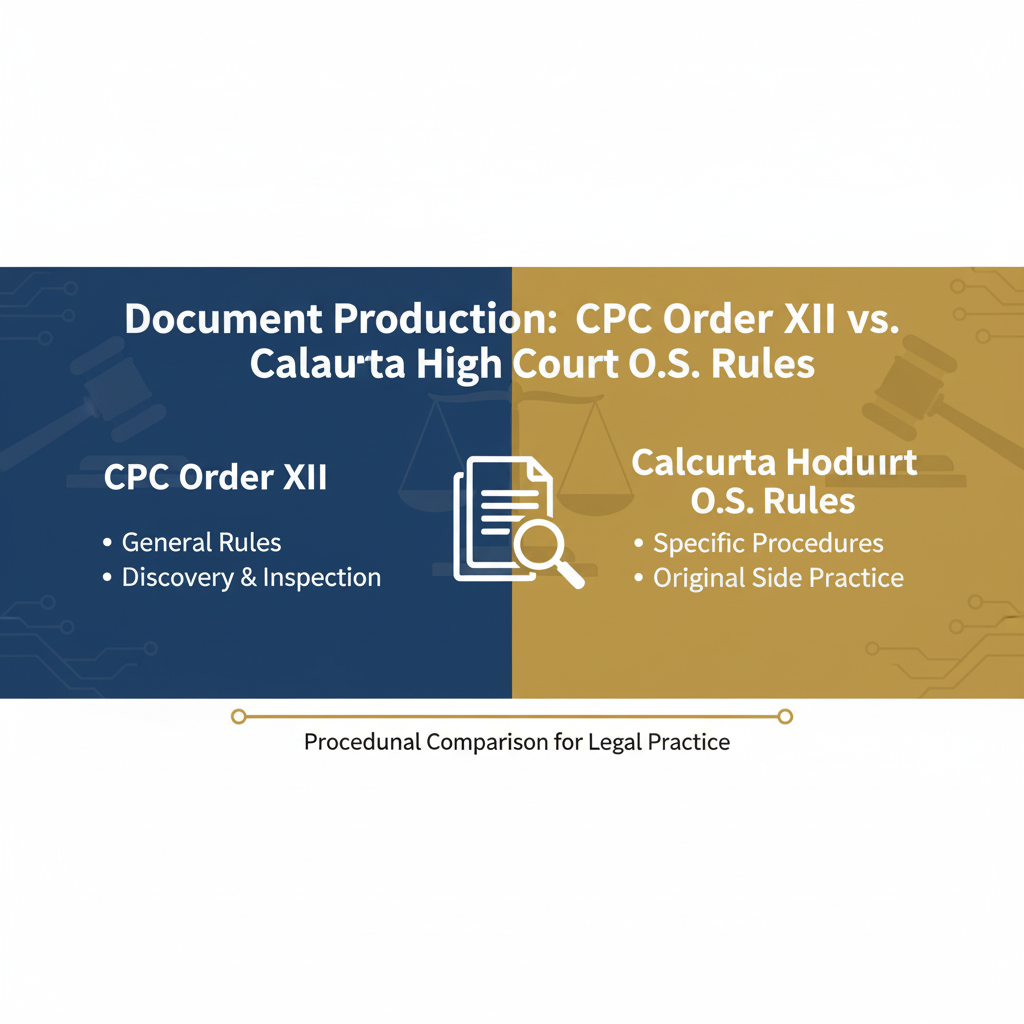Need to prove your residential address in India but don’t have a utility bill or standard document in your name? An Affidavit for Declaration of Actual Place of Residence is the powerful legal tool you need. However, navigating the complexities of Indian law—from state-specific stamp duty values in Maharashtra versus West Bengal, to the correct legal format and the crucial role of a Notary Public—can be daunting.
This ultimate 2025 guide demystifies the entire process. We provide a master template, multilingual versions, an interactive state-wise comparison, and expert insights to ensure your affidavit is legally sound and accepted by any authority, be it for a passport, bank KYC, or school admission.
The Ultimate Guide to Affidavits for Declaration of Residence in India
A deep dive into the legal framework, state-wise requirements, and practical applications of a residence affidavit. Your definitive resource for drafting a legally sound declaration.
The Affidavit of Residence: At a Glance
WHY?
To provide sworn, written proof of your residential address when other standard documents (like utility bills) are unavailable or insufficient.
WHEN?
For passport applications, bank accounts, school admissions, or visa processes where your address proof needs formal attestation.
HOW?
By drafting a formal statement, printing it on state-appropriate stamp paper, and swearing it before a Notary Public or Oath Commissioner.
Part I: The Legal Architecture of Affidavits in India
An affidavit is more than just a piece of paper; it's a sworn testimony with significant legal weight. Understanding its foundation is crucial to appreciating its power and the risks of misuse.
The Affidavit as a Sworn Testimony
An affidavit is a written statement of facts, voluntarily made by an individual (the "deponent"). What gives it legal authority is the act of swearing an oath or making an affirmation before a person legally authorized to administer it, like a Notary Public. This transforms the document into sworn testimony, making it a powerful tool for proving facts, especially your place of residence.
The legal standing of an affidavit is established within the Indian Evidence Act, 1872, and its procedural sanctity is derived from The Oaths Act, 1969.
Anatomy of a Legally Sound Affidavit
Deponent's Particulars
Unambiguously identifies the person making the statement.
Verification Clause
Mandatory final confirmation of truthfulness under penalty of law.
AFFIDAVIT
Declaration of Actual Place of Residence
I, [Full Name], son/wife/daughter of..., aged..., residing at...
1. That I am the deponent herein...
2. That I am residing at the above address since...
3. That this affidavit is required for the purpose of...
VERIFICATION
Verified at [Place] on [Date] that the contents are true...
Averments (Facts)
Numbered paragraphs, each stating a single, clear fact.
The Peril of Perjury: Consequences of a False Declaration
Filing a false affidavit is a serious criminal offense under the Indian Penal Code, 1860. It's considered giving false evidence, which can lead to severe penalties.
Warning!
Under Section 193 of the IPC, making a false statement in an affidavit can be punished with imprisonment for up to seven years and a fine.
Part II: The Definitive Template
This master template incorporates best practices and is designed for versatility. Use this as your starting point for drafting a declaration of residence.
Master Template (English)
BEFORE THE NOTARY PUBLIC AT [CITY]
AFFIDAVIT
(Declaration of Actual Place of Residence)
I, [Full Name], son/daughter/wife of [Father's/Husband's Name], aged about [Age] years, Occupation: [Occupation], an Indian Inhabitant, presently residing at [Full Residential Address], do hereby solemnly affirm and declare as under:
1. That I am the deponent herein and as such, I am fully conversant with the facts and circumstances of this affidavit.
2. That I am presently and permanently residing at the aforementioned address, [Full Residential Address again], continuously since [Date/Month/Year].
3. That this affidavit is required to be produced before [Name of the Authority, e.g., The Regional Passport Officer] as proof of my current residential address for the purpose of [State the Purpose, e.g., applying for a new passport].
4. That the statements made in the foregoing paragraphs are true and correct to the best of my knowledge, information, and belief.
DEPONENT
(Signature)
[Full Name]
VERIFICATION
Verified at [Place] on this [Day] day of [Month], [Year], that the contents of the above affidavit are true and correct to the best of my knowledge and belief and that nothing material has been concealed therefrom.
DEPONENT
(Signature)
[Full Name]
Part III: State-Specific Legal Landscapes
While the affidavit's structure is standard, its execution is governed by state laws, primarily concerning stamp duty. This is a critical step that varies widely across India.
The Mandate of Stamp Duty
An affidavit must be printed on a non-judicial stamp paper of a specific value, as mandated by the state's Stamp Act. Using the wrong value can lead to rejection.
State-Wise Stamp Duty Comparison Table
| State / Union Territory | Required Stamp Paper Value (₹) |
|---|---|
| Maharashtra | ₹ 500 |
| Karnataka | ₹ 100 |
| Bihar | ₹ 100 |
| Gujarat | ₹ 50 |
| Tamil Nadu | ₹ 20 |
| Delhi | ₹ 10 |
| West Bengal | ₹ 10 |
Domicile Certificate: The Importance of "Duration of Residence"
An affidavit of residence is often a supporting document for obtaining a Domicile Certificate, which grants access to state benefits. The "duration of residence" you declare is therefore critical. Be accurate!
Minimum Residency for Domicile Certificate (in Years)
Part IV: The Digital Shift: e-Stamping vs. Traditional Stamp Paper
The process of paying stamp duty is modernizing. Understanding the difference between traditional stamp papers and the new-age e-Stamping system is essential for a hassle-free experience.
Traditional Stamp Paper
- Process: Physically purchased from licensed stamp vendors.
- Availability: Limited by vendor timings and stock, especially for specific denominations.
- Verification: Prone to counterfeiting; verification can be a cumbersome process.
- Backdating: Risk of illegal backdating by vendors.
- Legacy: Still the primary method in some states and for certain legal instruments.
e-Stamping
- Process: Generated online via the Stock Holding Corporation of India Limited (SHCIL) website or authorized centers.
- Availability: Accessible 24/7 online; provides exact denomination required.
- Verification: Each e-stamp has a Unique Identification Number (UIN) that can be verified online instantly.
- Security: Tamper-proof and secure, eliminating the risk of fraud.
- Modern: The preferred and often mandatory method in major states like Delhi, Karnataka, and Maharashtra.
Part V: The Gatekeeper of Authenticity: Understanding the Notary's Role
A Notary Public is not just a rubber stamp. They are quasi-judicial officers appointed by the government who play a critical role in preventing fraud and ensuring the document's sanctity.
What a Notary Public Does
The primary functions of a Notary when attesting an affidavit are to:
- Verify Identity: The Notary must confirm the identity of the deponent by checking their original photo ID (like an Aadhaar Card or Passport).
- Administer the Oath: The deponent must sign the affidavit in the presence of the Notary after swearing an oath that the contents are true. This is the act that makes the statement legally binding.
- Record the Details: The Notary makes an entry in their official register, noting the details of the attestation, and affixes their official seal and signature.
Your Checklist Before Visiting the Notary
Draft Ready: Have the affidavit content finalized and printed on the correct stamp paper.
Original Photo ID: Carry a government-issued photo ID. Photocopies are not accepted.
Do Not Pre-Sign: You must sign the affidavit in front of the Notary. Do not sign it beforehand.
Passport Photos: Some notaries may affix your photograph on the affidavit and their register. Carry a couple of spares.
Part VI: Tailoring the Affidavit for Specific Authorities
The practical utility of your affidavit depends on its acceptance by the specific authority. Use our interactive filter to see what different organizations typically require.
Passport Authorities (PSK)
The Passport Seva Kendra usually prefers standard documents. An affidavit is a last resort or for specific, complex situations.
- Required Format: For standard declarations, a simple self-declaration on plain paper (Annexure 'E') is sufficient. For complex issues (e.g., name change), a formal, notarized affidavit on stamp paper is needed.
- Key Clauses: Emphasize your duration of continuous residence and citizenship. Follow the prescribed Annexure format strictly.
Part VII: Common Pitfalls & How to Avoid Them
A small mistake can lead to the rejection of your affidavit, causing delays and frustration. Here are some of the most common errors to watch out for.
Vague Purpose or Authority
Mistake: Stating the purpose as "for official use" is too generic. Fix: Be specific. Name the exact department and the reason, e.g., "to be submitted to the Regional Transport Office, Kolkata, for obtaining a driving license."
Signature Mismatch
Mistake: The signature on the affidavit does not match the signature on your photo ID. Fix: Ensure your signature is consistent across all documents. Practice if you need to.
Incomplete Verification Clause
Mistake: Forgetting to mention the date and place in the verification clause. Fix: The verification must explicitly state where and when it was verified. This is a non-negotiable legal requirement.
Part VIII: Special Scenarios and Use-Cases
Sometimes, a standard residence declaration isn't enough. Here’s how to adapt the affidavit for specific, common situations.
Affidavit for Rented Accommodation
When you live in a rented house, you may not have utility bills in your name. In this case, an affidavit of residence, often accompanied by the rental agreement, is a powerful combination. The affidavit should clearly state:
- That you reside at the property as a tenant.
- The name of your landlord.
- The date from which you have been occupying the premises.
Pro-Tip: Some authorities may ask for an additional affidavit from the landlord confirming your tenancy. It's wise to check this in advance.
Affidavit for a Family Member
This is common when a student applies for admission or a non-working spouse applies for a bank account. The primary owner/tenant of the house (e.g., a parent or spouse) acts as the deponent. The affidavit declares that the family member (e.g., son, daughter, wife) resides with them at their address. This legally links the family member to the established address proof of the deponent.
Part IX: Multilingual Templates
Here are the master templates translated into Hindi, Bengali, Tamil, and Telugu for your convenience. Use the tabs to switch between languages.
[शहर, राज्य] के नोटरी पब्लिक के समक्ष
शपथ-पत्र
(वास्तविक निवास स्थान की घोषणा)
मैं, [Full Name], पुत्र/पुत्री/पत्नी श्री [Father's/Husband's Name], आयु लगभग [Age] वर्ष, पेशा: [Occupation], भारतीय निवासी, वर्तमान में [Full Address] पर निवास कर रहा/रही हूँ, एतद्द्वारा सत्यनिष्ठा से प्रतिज्ञान करता/करती हूँ और निम्नानुसार घोषणा करता/करती हूँ:
1. यह कि मैं अधोहस्ताक्षरी शपथकर्ता हूँ और इस शपथ-पत्र के तथ्यों और परिस्थितियों से पूरी तरह अवगत हूँ।
2. यह कि मैं उपरोक्त पते, [Full Address again], पर [Date/Year] से लगातार स्थायी रूप से निवास कर रहा/रही हूँ।
3. यह कि इस शपथ-पत्र को [Authority Name] के समक्ष, [Purpose] के प्रयोजन हेतु मेरे वर्तमान आवासीय पते के प्रमाण के रूप में प्रस्तुत किया जाना आवश्यक है।
4. यह कि पूर्वगामी पैराग्राफों में दिए गए कथन मेरे सर्वोत्तम ज्ञान, सूचना और विश्वास के अनुसार सत्य और सही हैं।
शपथकर्ता
(शपथकर्ता के हस्ताक्षर)
[Full Name]
सत्यापन
आज दिनांक [Date] को [Place] में सत्यापित किया कि उपरोक्त शपथ-पत्र की सामग्री मेरे सर्वोत्तम ज्ञान और विश्वास के अनुसार सत्य और सही है और इसमें कोई भी महत्वपूर्ण तथ्य छिपाया नहीं गया है।
शपथकर्ता
(शपथकर्ता के हस्ताक्षर)
[Full Name]
Part X: Frequently Asked Questions (FAQs)
What is the validity period of a residence affidavit?
Legally, an affidavit does not have an "expiry date" as it is a statement of facts that were true on the date it was sworn. However, most authorities will not accept an affidavit that is too old, typically more than 6 months to a year, as circumstances (like your residence) could have changed. It is always best to use a freshly executed affidavit.
Can I make corrections on a notarized affidavit?
No. Once an affidavit is signed and notarized, you cannot make any alterations, use whitener, or strike anything out. Any change would invalidate the document. If there is a mistake, you must prepare a new affidavit from scratch with the correct information.
Can a single affidavit be used for multiple purposes?
It is highly discouraged. The affidavit explicitly states the purpose and the authority it is intended for. Submitting photocopies is generally not allowed as authorities require the original. If you need to provide proof to different organizations, it is standard practice to execute separate, original affidavits for each one.
Who can be a deponent?
Any person who is a legal adult (18 years or older) and of sound mind can be a deponent. They must have personal knowledge of the facts they are swearing to in the affidavit.










